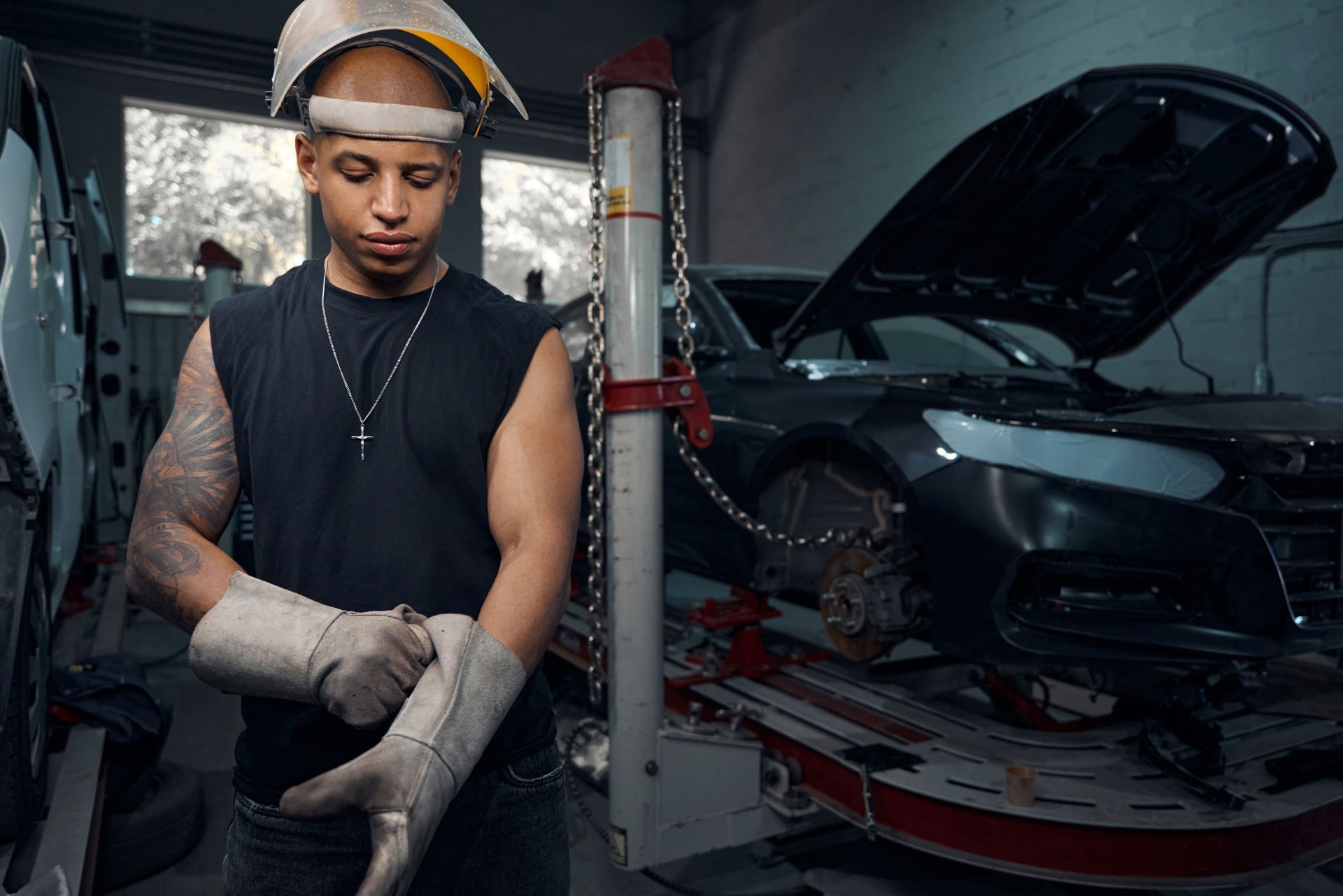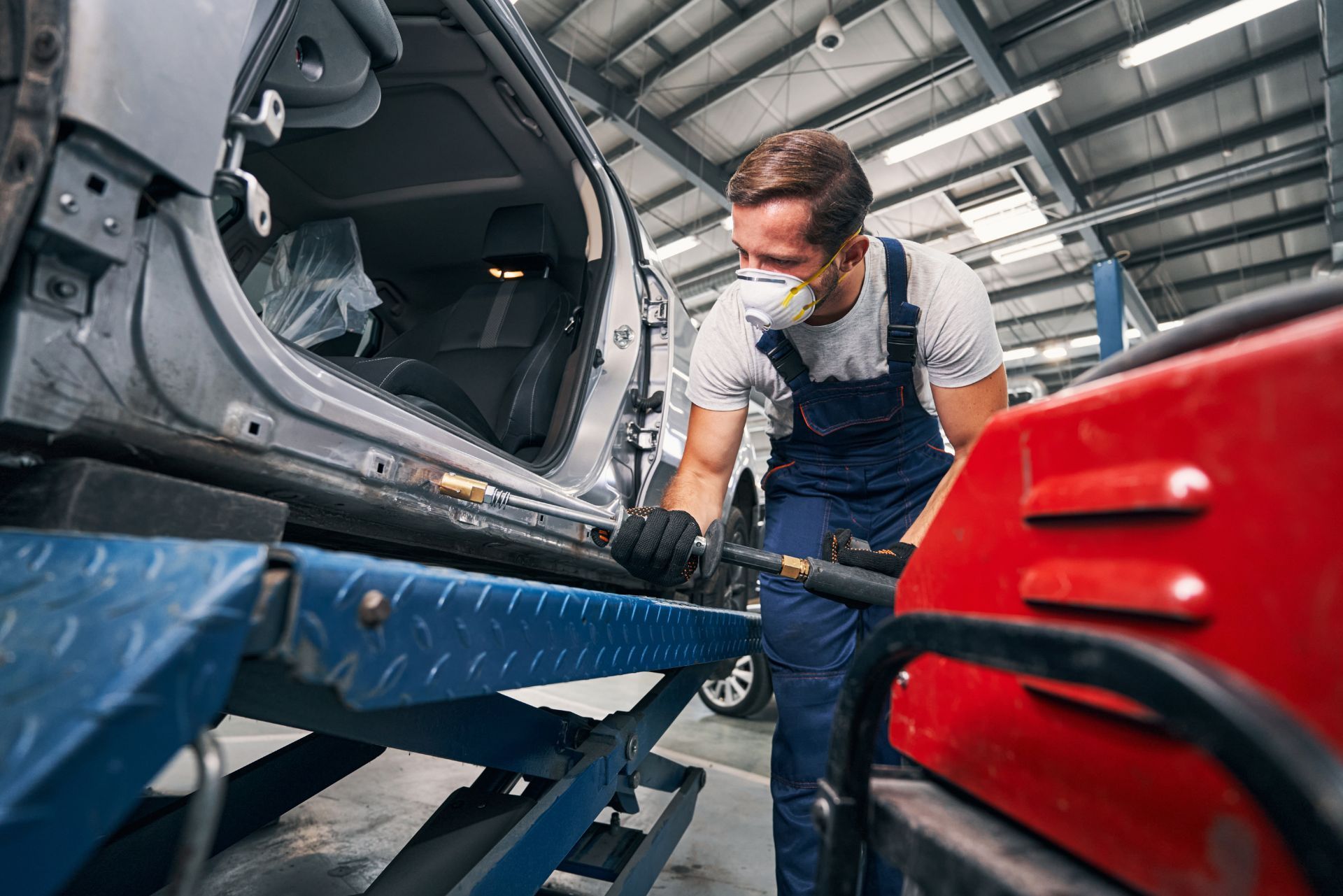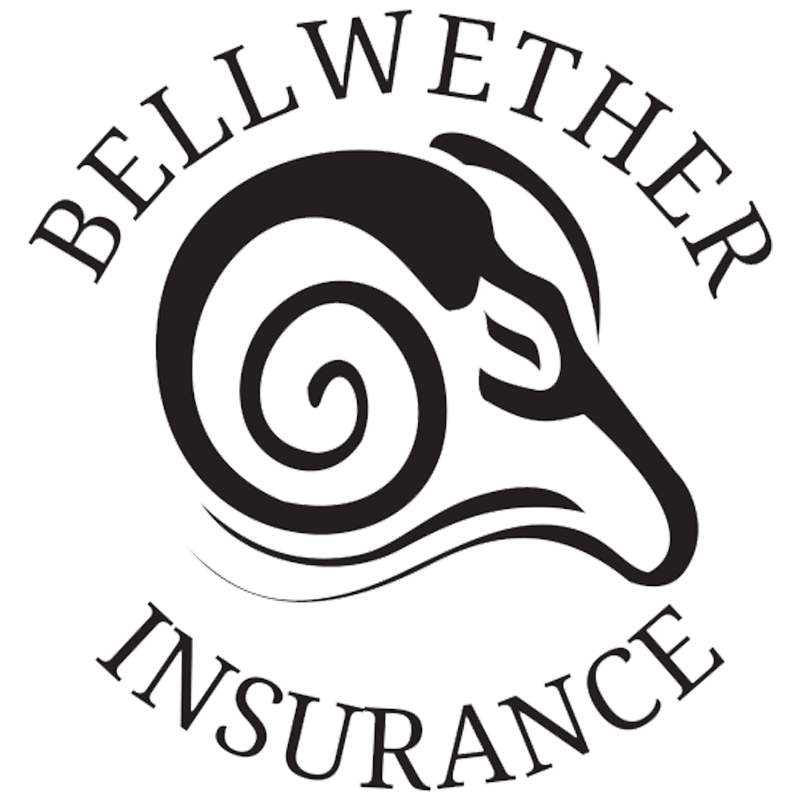Ohio Auto Body Shop Insurance

Index
Contact Us
Phone
216-600-2828
Location
100 N. Center Street PO Box 627 LaGrange, OH 44050
Operating an auto body shop in Ohio comes with its own set of challenges and responsibilities. One of the most critical aspects of running this type of business is ensuring that it is adequately protected. This is where
auto body shop insurance comes into play. Understanding the various types of insurance available, what they cover, and why they are essential can help business owners make informed decisions. This article will delve into the specifics of Ohio auto body shop insurance, covering everything from the types of coverage available to the factors that influence insurance costs.
Understanding Auto Body Shop Insurance
Auto body shop insurance is a specialized form of coverage designed to protect businesses that provide services related to vehicle repair and maintenance. This insurance can cover a range of risks, including property damage, liability claims, and employee injuries. For auto body shop owners in Ohio, understanding the nuances of this insurance is vital for safeguarding their business.
Why Insurance is Essential for Auto Body Shops
Insurance is not just a legal requirement; it is also a financial safety net. Auto body shops face various risks, from customer vehicles being damaged while in the shop to potential lawsuits arising from accidents or injuries. Without adequate insurance coverage, a single incident could lead to significant financial losses that could jeopardize the business.
Moreover, having insurance can enhance a shop's credibility. Customers are more likely to trust a business that is insured, as it demonstrates a commitment to professionalism and responsibility. This can lead to increased customer loyalty and a stronger reputation in the community. Additionally, many insurance providers offer resources and support that can help business owners implement safety protocols, further reducing the likelihood of accidents and claims.
Common Types of Coverage for Auto Body Shops
There are several types of insurance coverage that auto body shop owners should consider. Each type serves a specific purpose and addresses different risks associated with running a repair business.
- General Liability Insurance: This coverage protects against claims of bodily injury or property damage that occur on the business premises. For instance, if a customer slips and falls in the shop, this insurance can cover medical expenses and legal fees.
- Property Insurance: This type of insurance covers damage to the physical assets of the business, including the building, equipment, and inventory. In the event of a fire, theft, or natural disaster, property insurance can help cover the costs of repairs or replacements.
- Workers' Compensation Insurance: Required by law in Ohio, this insurance provides coverage for employees who are injured on the job. It helps cover medical expenses and lost wages, ensuring that employees are taken care of while protecting the business from potential lawsuits.
In addition to these essential coverages, auto body shop owners may also want to consider specialized policies such as garage liability insurance, which specifically addresses risks associated with operating a garage or repair facility. This can include coverage for damage to customer vehicles while in the shop's care, which is a critical aspect of maintaining customer trust. Furthermore, equipment breakdown insurance can be invaluable, as it covers the repair or replacement of essential tools and machinery that are vital for daily operations. By understanding and investing in these various types of coverage, auto body shop owners can create a robust insurance portfolio that not only protects their business but also fosters growth and stability in a competitive market.

Factors Influencing Insurance Costs
The cost of auto body shop insurance can vary widely based on several factors. Understanding these factors can help shop owners anticipate their insurance expenses and make informed decisions about their coverage.
Location and Size of the Business
The geographical location of the auto body shop plays a significant role in determining insurance costs. Areas with higher crime rates or a greater risk of natural disasters may lead to higher premiums. Additionally, the size of the business, including the number of employees and the square footage of the shop, can influence costs. Larger operations may require more coverage, which can increase premiums. For instance, a shop located in a bustling urban area might face different risks compared to one in a suburban neighborhood, where the likelihood of theft or vandalism could be lower. Moreover, local regulations and building codes can also affect insurance rates, as shops in compliance with stringent safety standards may benefit from reduced premiums.
Type of Services Offered
The specific services provided by the auto body shop can also impact insurance rates. Shops that offer specialized services, such as custom painting or high-performance modifications, may face higher risks and, consequently, higher insurance costs. Insurers will assess the types of services offered to determine the level of risk associated with the business. For example, shops that frequently deal with high-value vehicles or rare models might attract higher premiums due to the increased potential for costly repairs. Additionally, offering services that involve hazardous materials, such as certain types of paints or solvents, can further elevate risk assessments, prompting insurers to adjust rates accordingly.
Claims History
A shop's claims history is another critical factor in determining insurance premiums. Businesses with a history of frequent claims may be viewed as higher risk by insurers, leading to increased rates. Conversely, a clean claims history can result in lower premiums and may even qualify the business for discounts. It's worth noting that not all claims are treated equally; for instance, a single large claim could have a more significant impact than multiple smaller claims. Additionally, insurers may also consider the nature of the claims—claims related to property damage might be perceived differently than those involving liability issues. Therefore, maintaining a proactive approach to risk management and implementing safety measures can not only reduce the likelihood of claims but also enhance the shop's standing with insurance providers, potentially leading to more favorable rates.
Choosing the Right Insurance Provider
Selecting the right insurance provider is crucial for ensuring that an auto body shop has the coverage it needs. Not all insurance companies offer the same policies or levels of service, so it is essential to conduct thorough research.
Evaluating Coverage Options
When looking for an insurance provider, it is important to evaluate the coverage options they offer. Some companies may provide specialized policies tailored specifically for auto body shops, while others may offer more generic business insurance. Understanding the specific needs of the shop will help in selecting a provider that offers the most appropriate coverage. For instance, coverage for tools and equipment, liability for customer vehicles, and protection against natural disasters are all critical components that should be considered. Additionally, some providers might offer add-ons such as business interruption insurance, which can be invaluable in the event of unforeseen circumstances that halt operations.
Customer Service and Support
Customer service is another critical factor to consider when choosing an insurance provider. A responsive and knowledgeable insurance agent can make a significant difference, especially when it comes time to file a claim. Look for providers with a reputation for excellent customer service and support. It's beneficial to read reviews and testimonials from other auto body shop owners to gauge their experiences. Furthermore, consider whether the provider offers 24/7 support or online resources, which can be particularly helpful in urgent situations. A dedicated claims representative can also streamline the claims process, ensuring that repairs can resume as quickly as possible.
Comparing Quotes
Obtaining quotes from multiple insurance providers is a smart strategy for finding the best rates. Each insurer will assess risk differently, leading to variations in premiums. By comparing quotes, auto body shop owners can ensure they are getting the best possible coverage for their budget. However, it's not just about the price; it's also essential to look at the details of what each policy covers. Some insurers may offer lower premiums but have higher deductibles or exclude certain types of coverage that are critical for an auto body shop. Additionally, consider the financial stability of the insurance company, as a provider with a strong financial rating is more likely to fulfill claims promptly and reliably, which can be a significant factor in the long-term success of the business.
Understanding Policy Exclusions
Every insurance policy comes with its own set of exclusions—situations or conditions that are not covered by the insurance. Understanding these exclusions is vital for auto body shop owners to avoid unexpected costs in the event of a claim. Without this knowledge, shop owners may find themselves financially vulnerable, especially in the face of unforeseen incidents that could lead to significant losses.
Common Exclusions in Auto Body Shop Insurance
Some common exclusions that may be found in auto body shop insurance policies include:
- Intentional Damage: Any damage caused intentionally by the business owner or employees is typically not covered.
- Wear and Tear: Routine maintenance issues or natural wear and tear on vehicles are usually excluded from coverage.
- Contractual Liabilities: If the shop has entered into contracts that assume liability beyond standard operations, those liabilities may not be covered.
Importance of Reading the Fine Print
It is essential for auto body shop owners to read the fine print of their insurance policies carefully. Understanding what is and isn’t covered can prevent unpleasant surprises when filing a claim. If there are any uncertainties, it is wise to ask the insurance provider for clarification. Additionally, shop owners should consider reviewing their policies annually or whenever significant changes occur in their operations, such as the addition of new services or equipment. This proactive approach can help identify any gaps in coverage that may arise due to evolving business needs.
Moreover, it can be beneficial for auto body shop owners to engage with a knowledgeable insurance broker who specializes in commercial policies. These professionals can provide insights into industry-specific risks and help tailor a policy that not only meets legal requirements but also aligns with the unique operational aspects of the shop. By doing so, owners can ensure that they have adequate coverage while also being fully aware of the exclusions that could impact their financial stability.

Claims Process for Auto Body Shop Insurance
Knowing how to navigate the claims process is crucial for auto body shop owners. A well-understood process can lead to quicker resolutions and less stress when dealing with incidents. Understanding the nuances of your insurance policy can also make a significant difference, as each policy may have specific requirements or limitations that can impact the claims process. Familiarizing yourself with these details can empower you to make informed decisions and advocate effectively for your shop’s needs.
Steps to File a Claim
Filing a claim typically involves several steps:
- Document the Incident: Gather all relevant information about the incident, including photos, witness statements, and any other evidence. This documentation serves as a critical foundation for your claim, providing the insurer with a clear picture of what transpired. Consider taking photos from multiple angles and documenting any damage thoroughly, as this can help substantiate your claim and expedite the review process.
- Notify the Insurance Provider: Contact the insurance company as soon as possible to report the incident and start the claims process. Many insurers have specific timeframes within which claims must be reported, so prompt notification is essential. Additionally, being proactive can demonstrate your commitment to resolving the issue efficiently, which may positively influence the handling of your claim.
- Complete Required Forms: Fill out any necessary claim forms provided by the insurer, ensuring all information is accurate and complete. Double-checking your forms for errors or omissions can prevent delays in processing your claim. If you have any questions about the forms, don’t hesitate to reach out to your insurance agent for clarification.
- Follow Up: Stay in contact with the insurance adjuster assigned to the claim to provide any additional information needed and to check on the status of the claim. Regular communication can help keep your claim on track and allow you to address any issues that may arise quickly.
Tips for a Smooth Claims Experience
To ensure a smooth claims experience, consider the following tips:
- Keep detailed records of all communications with the insurance company. This includes notes from phone calls, emails, and any correspondence related to your claim. Having a comprehensive record can be invaluable if disputes arise or if you need to escalate the matter.
- Be honest and transparent about the incident when filing a claim. Providing accurate information not only helps maintain your credibility but also fosters a cooperative relationship with your insurer. Misrepresentations, even if unintentional, can lead to complications or even denial of your claim.
- Respond promptly to any requests for additional information from the insurer. Delays in providing requested documentation can slow down the claims process and may even jeopardize your claim. Being organized and prepared can help you respond quickly and keep the process moving forward.
Additionally, consider reaching out to other auto body shop owners in your network to share experiences and tips regarding the claims process. Their insights can provide valuable information on what to expect and how to handle specific situations. Furthermore, staying informed about industry trends and changes in insurance regulations can help you better navigate the claims process and ensure you are adequately covered for future incidents.
Risk Management Strategies for Auto Body Shops
Implementing effective risk management strategies can help auto body shop owners minimize potential risks and reduce insurance costs. By proactively managing risks, businesses can create a safer work environment and potentially lower their insurance premiums.
Safety Training for Employees
Providing regular safety training for employees is one of the most effective ways to reduce workplace accidents. Training should cover topics such as proper equipment usage, emergency procedures, and safe lifting techniques. A well-trained workforce is less likely to experience accidents, which can lead to lower workers' compensation claims.
Regular Maintenance and Inspections
Conducting regular maintenance and inspections of equipment and facilities can help identify potential hazards before they lead to accidents. This proactive approach not only enhances safety but also demonstrates to insurance providers that the business is committed to risk management, which may result in lower premiums.
Implementing Safety Protocols
Establishing clear safety protocols and ensuring that all employees are aware of them can help create a culture of safety within the shop. This includes guidelines for handling hazardous materials, operating machinery, and responding to emergencies. A strong safety culture can significantly reduce the likelihood of accidents and injuries.
Conclusion
In summary, auto body shop insurance is a crucial aspect of running a successful business in Ohio. By understanding the different types of coverage available, the factors that influence insurance costs, and the claims process, shop owners can make informed decisions that protect their business and employees. Implementing effective risk management strategies can further enhance safety and potentially reduce insurance premiums. Ultimately, investing in the right insurance coverage is not just about compliance; it is about ensuring the long-term viability of the auto body shop.
For auto body shop owners in Ohio, taking the time to research and understand their insurance options is a worthwhile endeavor that can lead to peace of mind and financial security.


